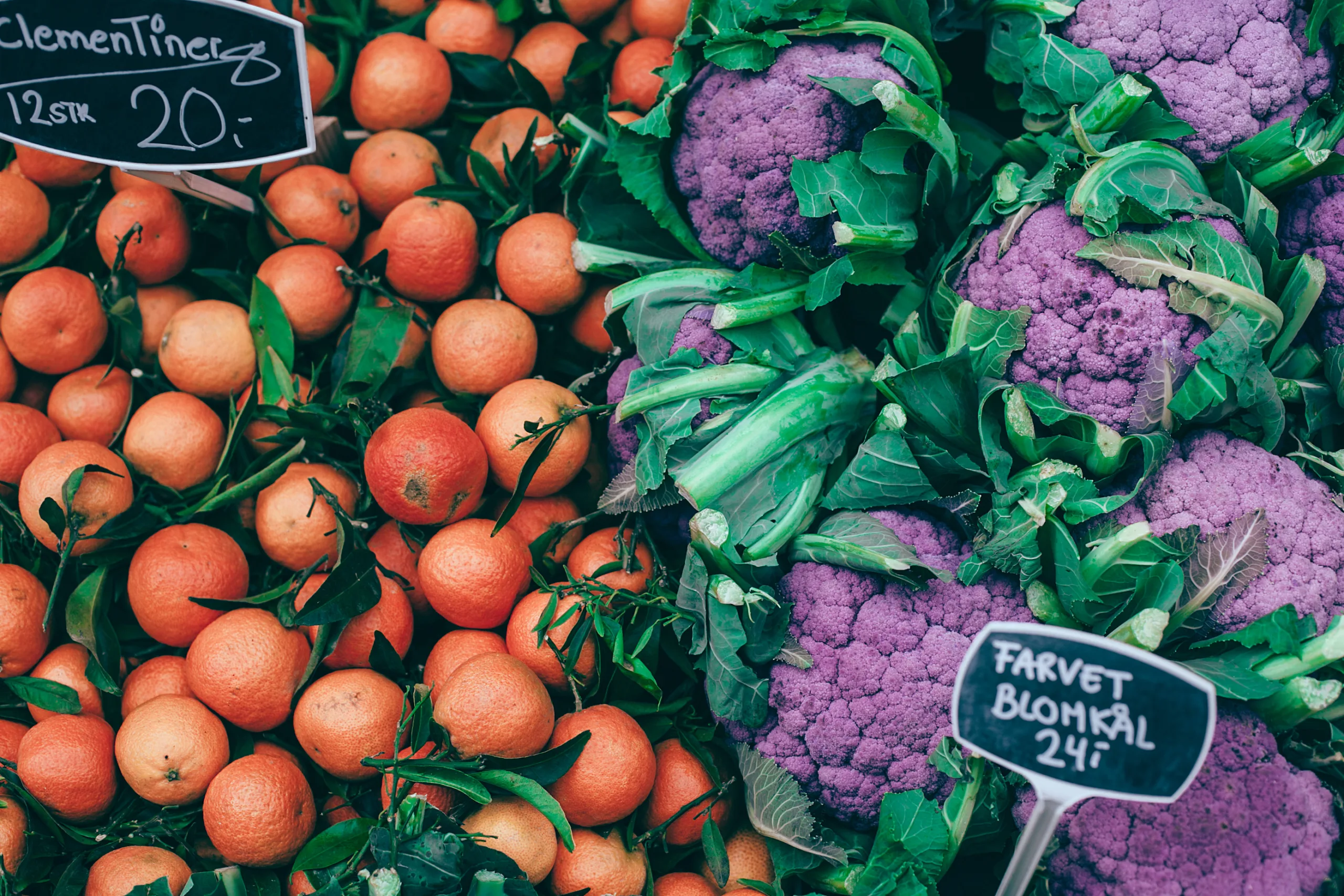Have you ever wondered if cauliflower is ok to eat when following the low FODMAP diet? Are you concerned that eating cauliflower could trigger your IBS symptoms? If so, this article is for you! This article will provide an answer to the question of whether or not cauliflower is low FODMAP, and provide tips on how to enjoy it safely.
Yes, cauliflower is low FODMAP. It contains negligible amounts of FODMAPs, so it can be eaten in moderation as part of a low FODMAP diet.
What is Cauliflower?
Cauliflower is a cruciferous vegetable of the Brassica family. It is closely related to broccoli, kale, and cabbage and has a mild flavor and a white, creamy texture. It is often used as an alternative to potatoes or rice as it can be cooked in similar ways. Cauliflower can be eaten raw or cooked, and its nutrition profile makes it an increasingly popular food choice. It is high in fiber, vitamins, minerals, and antioxidants. It also contains phytonutrients that have anti-inflammatory properties.
Cauliflower is available year-round in grocery stores, but it peaks in the winter months. When selecting cauliflower, choose heads that are firm and compact with no brown spots or soft spots. The leaves should also be intact and free of discoloration or yellowing. Fresh cauliflower should be stored in the refrigerator for up to five days in a loosely sealed plastic bag or container with a damp paper towel inside to keep it from drying out.
Cauliflower can be prepared in many ways including steaming, boiling, roasting, sautéing, grilling or even mashing. When cooking cauliflower keep in mind that overcooking will cause it to become mushy and unappetizing. To get the most flavor out of your cauliflower try roasting it at high temperatures for about twenty minutes with some olive oil and seasonings like garlic powder or paprika for added flavor.
Overall cauliflower is a versatile vegetable that can be enjoyed raw or cooked in many different ways for a variety of dishes. Including it in your diet can provide numerous health benefits such as improved digestion and reduced inflammation due to its high nutrient content and antioxidant properties. So next time you’re looking for something new to try consider adding some delicious cauliflower into your meal!
FODMAP
FODMAP stands for Fermentable Oligosaccharides, Disaccharides, Monosaccharides and Polyols. It is a group of short-chain carbohydrates found in certain foods that can be difficult to digest. This can lead to uncomfortable symptoms such as bloating, abdominal pain, and altered bowel habits. FODMAPs are found in a variety of foods including certain fruits and vegetables, dairy products, grains, and legumes. People who have difficulty digesting FODMAPs may benefit from following a low-FODMAP diet. This involves avoiding high-FODMAP foods and focusing on low-FODMAP alternatives. However, it is important to note that for some people following a low-FODMAP diet may not be beneficial or necessary. Consulting with a nutritionist or other healthcare professional can help determine the best course of action.
Click here to preview your posts with PRO themes ››
By avoiding or limiting high-FODMAP foods, many people find relief from digestive discomfort and improved quality of life. However, it is important to discuss any changes in diet with your healthcare provider before making any drastic changes.
The Benefits of Eating Low FODMAP Vegetables
Eating a low FODMAP diet can help manage digestive issues such as IBS, and one of the best ways to do this is to incorporate low FODMAP vegetables. Low FODMAP vegetables include carrots, celery, lettuce, kale, spinach, zucchini, squash and sweet potatoes. These vegetables provide a variety of health benefits which can help improve overall digestive health and wellbeing.
One of the main benefits of eating low FODMAP vegetables is that they are rich in fibre. Fibre helps to regulate digestion and helps to keep you feeling full for longer. Eating a diet high in fibre can also help reduce constipation and other digestive issues. Low FODMAP vegetables are also packed with vitamins and minerals which can help boost your immune system and promote good health overall.
Another benefit of eating low FODMAP vegetables is that they are generally low in calories. This makes them an ideal option if you are trying to watch your weight or maintain a healthy diet. Low FODMAP vegetables also contain antioxidants which can help protect the body from damage caused by free radicals. This can help reduce inflammation in the body which can help improve overall health and wellbeing.
Finally, eating low FODMAP vegetables can be beneficial for those who have food intolerances or allergies as they are less likely to trigger an allergic reaction than other types of food. They may also be easier to digest as they contain fewer fermentable carbohydrates than other types of food, making them easier on the digestive system.
In conclusion, incorporating low FODMAP vegetables into your diet is a great way to improve your overall health and wellbeing, as well as managing any digestive issues you may have. They provide a variety of health benefits such as being rich in fibre, vitamins and minerals; being low in calories; containing antioxidants; and being less likely to cause an allergic reaction or intolerance than other types of food.
Is Cauliflower a High or Low FODMAP Food?
Cauliflower is considered a low-FODMAP food. FODMAP stands for Fermentable Oligo-saccharides, Di-saccharides, Mono-saccharides, and Polyols; it is a group of fermentable carbohydrates found in certain foods. Cauliflower contains small amounts of several FODMAPs, including fructans and galactooligosaccharides. However, the amount of FODMAPs in cauliflower is so low that it can generally be tolerated by people with IBS (irritable bowel syndrome) or other digestive sensitivities.
When cooked, cauliflower can also be a good source of fiber, providing about 4 grams of fiber per cup. Fiber helps to keep the digestive system running smoothly and can help to reduce symptoms of IBS. Additionally, cauliflower contains vitamins and minerals such as vitamin C, potassium, calcium and magnesium which are important for overall health.
Click here to preview your posts with PRO themes ››
In general, cauliflower is an excellent choice for people with digestive issues as it is low in FODMAPs and high in beneficial nutrients. However, it’s important to note that everyone’s tolerance for certain foods may vary so it’s best to listen to your body and eat what works best for you!

How Much Cauliflower Can I Eat if I am Following a Low FODMAP Diet?
Following a low FODMAP diet can be helpful for those who suffer from irritable bowel syndrome (IBS) or other digestive issues. Cauliflower is a type of vegetable that is allowed on the low FODMAP diet, but it is important to know how much you should eat in order to remain within the dietary guidelines.
Cauliflower is considered to be low in FODMAPs, meaning you can eat it without triggering symptoms like gas, bloating, and abdominal pain. However, there are certain serving sizes that you should stick to in order to remain within the dietary guidelines.
A single serving of cauliflower should consist of no more than one cup when it is raw or cooked. For example, if you are eating a salad with cauliflower as an ingredient, the total amount of cauliflower should not exceed one cup. If you are making mashed potatoes with cauliflower as an ingredient, then the total amount of cauliflower used should not exceed one cup as well.
It is also important to note that while cauliflower can be eaten on the low FODMAP diet, some people may still experience gastrointestinal symptoms if they eat too much of it. If this happens, it’s best to reduce your intake or switch to other low FODMAP vegetables like lettuce and spinach instead.
Overall, following a low FODMAP diet can help those with IBS and other digestive issues manage their symptoms more effectively. Cauliflower is considered a low FODMAP food and can be eaten in moderation as part of this type of diet. A single serving size should consist of no more than one cup when raw or cooked in order to remain within dietary guidelines and reduce the risk of triggering symptoms.
Are There Any Alternatives to Eating Cauliflower if it is Not Low FODMAP?
If you’re looking for an alternative to cauliflower, there are plenty of other vegetables that can provide the same nutritional benefits. Broccoli, Brussels sprouts, and kale are all excellent sources of vitamins and minerals. Additionally, they’re low in carbohydrates and fat, making them a great choice for those who are trying to watch their calories or maintain a healthy weight. Other alternatives include bell peppers, zucchini, and eggplant. All of these vegetables can be cooked in a variety of ways and can be used as substitutes in many recipes that call for cauliflower.
Additionally, if you’re looking for a vegetable-based alternative to cauliflower but don’t want to give up the flavor and texture of the original dish, mushrooms and squash can be great alternatives. Mushrooms have a similar texture to cauliflower when cooked and provide an umami flavor that is similar to that of cauliflower. Squash can also provide a similar texture when cooked but with a slightly sweeter taste than cauliflower. Both mushrooms and squash can be used as substitutes in many dishes where cauliflower is traditionally used.
Click here to preview your posts with PRO themes ››
Finally, if you’re looking for a non-vegetable alternative to cauliflower, legumes such as lentils or beans can provide a great source of protein while also adding flavor and texture to dishes. Both lentils and beans can be cooked in a variety of ways and make excellent substitutes in recipes that call for cauliflower. Additionally, legumes are high in fiber which makes them an ideal choice for those who are looking to increase their intake of dietary fiber.
Are There Any Recipes That Use Low FODMAP Cauliflower?
Cauliflower is a versatile vegetable that can be cooked in a variety of ways. It’s low in FODMAPs, making it an ideal choice for those following a low-FODMAP diet. There are many delicious recipes that make use of cauliflower, ranging from soups and salads to even pizza crusts. Here are some of the best recipes out there that feature this tasty vegetable:
Roasted Cauliflower Tacos – Roasted cauliflower makes a delicious taco filling, especially when combined with black beans, avocado, and your favorite toppings. This simple recipe is sure to be a hit with the whole family!
Cauliflower Fried Rice – This healthy take on traditional fried rice uses cauliflower instead of white rice, making it much lower in FODMAPs. It’s easy to make and can be customized with whatever veggies you have on hand.
Cauliflower Soup – A classic soup made with cauliflower and broth is an easy way to get your daily dose of veggies in a delicious way. Add some herbs and spices for extra flavor!
Cauliflower Pizza Crust – Cauliflower pizza crust is a great alternative to regular pizza dough if you’re following a low-FODMAP diet. It’s easy to make and can be topped with all your favorite toppings for an irresistible meal.
Cauliflower Mac ‘n Cheese – Who says mac ‘n cheese has to be made with pasta? This creamy dish uses cauliflower instead for a lower-FODMAP version that’s just as tasty as the original.

Conclusion
Cauliflower is considered low FODMAP. It is a good source of nutrients and antioxidants and can be a great addition to a low FODMAP diet. However, it should still be consumed in moderation as eating too much may cause digestive distress. It is important to keep in mind that everyone’s tolerance level for FODMAPs is different and some may find that their symptoms are worsened by eating cauliflower.
It is also important to remember that other foods, such as garlic, onion and wheat, may still be problematic even if cauliflower is low in FODMAPs. For best results, it’s recommended to consult with an experienced dietitian or nutritionist to create an individualized meal plan based on your specific needs and dietary restrictions.
In conclusion, cauliflower appears to be a safe option for those following a low FODMAP diet. However, it should still be consumed in moderation and individuals should work with an experienced professional to ensure they are getting the most benefit from their low FODMAP meal plans.

